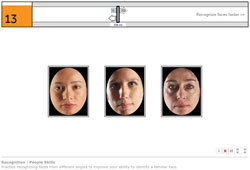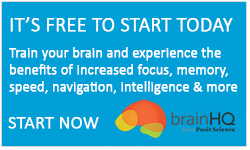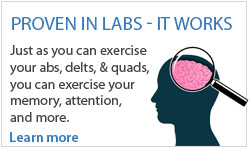![]() Have you ever experienced that embarrassing situation where you don’t recognize someone you’ve definitely met before – and who clearly remembers you? If the ability to remember others is important to your job or perhaps other activities you participate then it can be particularly frustrating when you can’t remember faces. Consider just a few examples:
Have you ever experienced that embarrassing situation where you don’t recognize someone you’ve definitely met before – and who clearly remembers you? If the ability to remember others is important to your job or perhaps other activities you participate then it can be particularly frustrating when you can’t remember faces. Consider just a few examples:
- A nurse or doctor who wants to be able to remember her patients.
- A sales professional who would like to keep track of prospective customers.
- A teacher who needs to remember all of his students.
If remembering faces is a challenge that you face then Recognition is the right exercise for you.
 Your brain follows a visual stream in order to recognize faces. The process starts with basic visual information and ends in a part of the brain that, according to many scientists, may be focused on facial recognition called the ‘fusiform face area’.
Your brain follows a visual stream in order to recognize faces. The process starts with basic visual information and ends in a part of the brain that, according to many scientists, may be focused on facial recognition called the ‘fusiform face area’.
Basic visual information can be exercised in other BrainHQ exercises like Visual Sweeps. Our Recognition exercise, on the other hand, focuses on exercising the fusiform face area by asking you to identify exactly who you observed from a selection of faces that were shown to you quickly.
The Recognition exercise will grow increasingly more difficult, in order to push your fusiform face area to recognize faces during more challenging situations, in the following ways:
- Initially you will have to match a face that is looking directly at you to the exact same face that is also looking directly at you. Over time the angle of the face changes such that you must match a face looking directly at you with a face that is displayed in profile or at a 45 degree angle.
- You will have to choose from an increasing number of faces (initially 3 and up to 6).
- Initially faces of men and women will be mixed together however, as the levels progress, you will have to select from faces of the same gender which can make it much more difficult to differentiate.
- Your brain will be required to very rapidly identify distinguishing characteristics of each face as faces appear on screen for shorter and shorter intervals.






 English
English
 Français
Français


